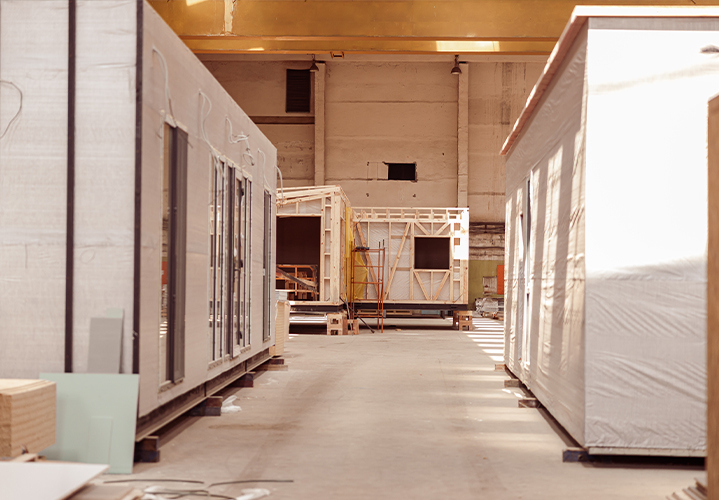Modular construction is becoming increasingly popular in the life sciences sector. According to a “2022 and beyond” report from life science construction specialist CRB[1], which gathered responses from nearly 500 life science industry leaders, 63% of respondents indicated that they are planning to use preconstructed or modular methods to pursue lab site expansion in the next five years.
Modular construction is a process in which a building is constructed off-site, under controlled conditions in a factory setting, before being transported to site for assembly.
The CRB survey suggested that the life sciences industry is increasingly trending towards integrating technology into its operations, so perhaps it is unsurprising that modular construction is on the rise. Digital technology allows modular components to be conceived, fabricated and assembled into the completed building in a digital world, thus ensuring the methodology for the construction to be considered at the outset and increasing the agility and adaptability of a project’s design.
Efficiency and quality control
Projects using prefabricated components and off-site construction can also reduce construction periods. While it is important not to overlook the initial time required to develop and test the components, the overall benefits of modularisation mean it is increasingly being embraced by the life sciences industry. The ability to apply rigorous quality control in a controlled environment before components are delivered to the site for assembly is especially relevant to the life sciences sector.
Using repetitive production processes can reduce costs and increase consistency. By implementing consistent standards across multiple facilities, individuals working across multiple sites will be familiar with the similar components of each facility, thus mitigating the risk of mistakes. The CRB report notes that this is extremely valuable in a landscape where human error can result in the delay or loss of batches of life-saving therapies.
Pharmaceutical companies are regularly faced with the requirement to develop rapid-build, high-quality manufacturing facilities and units constructed in factory conditions are likely to have the corresponding benefit of greater precision and shorter build times. Building components can be constructed much quicker in factory conditions than on-site, primarily because the impact of external factors that delay traditional builds, such as adverse weather or challenging site logistics, will be lessened.
Further, modular methods can streamline regulatory compliance, which itself is an issue that can often cause project delay. The CRB report highlights that ensuring the compliance of one small but exemplary build-out can prove to be an effective speed-to-market strategy, as companies can learn from early deployment phases and apply those lessons as they scale. By ensuring the compliance of one facility and duplicating that in other facilities, regulatory approval is likely to be expedited.
One final advantage worth noting is the ability to increase manufacturing space without the need to stop production. With the units being constructed off-site, prefabricated components can be added to an existing space and integrated into a facility, ensuring minimal disruption to ongoing operations.
Risks to consider
Whilst modular construction clearly has its advantages, it can also bring about challenges that companies should consider when contemplating this method of construction.
Where materials are being constructed in factories before delivery on site, consider who owns and takes responsibility for these materials. This is especially important when units are being mass-produced for several different projects. Ownership of materials can be dealt with in the construction documentation, and this should be considered when negotiating contracts.
Transporting modularised units presents a new set of risks, particularly relating to loss or damage prior to delivery. Parties will need to ensure that their contracts allocate risk and that appropriate insurances are in place to cover the eventuality of problems with transportation to site.
Design and workmanship obligations should also be considered. If units are manufactured off-site by a party other than the main contractor, product warranties may take on increased importance to end users.
Lastly, whilst modular construction can improve affordability due to reduced material waste, shorter time-scales leading to quicker occupancy and less site disruption, it does require more involved, upfront decision-making in the design process and material selection. This might mean that the initial project costs more in the first instance, but in the long run, savings can be significant.
Conclusion
With the life sciences sector looking to embrace this method of construction, companies should ensure they thoroughly understand the modular method and evaluate its benefits, as well as being informed as to the specific risks of such projects.
Our multi-disciplinary life sciences team has extensive experience advising businesses in the sector on all aspects of construction, and we would be delighted to answer any questions you may have.

 Gwilym Evans
Gwilym Evans Lauren Melnyk
Lauren Melnyk